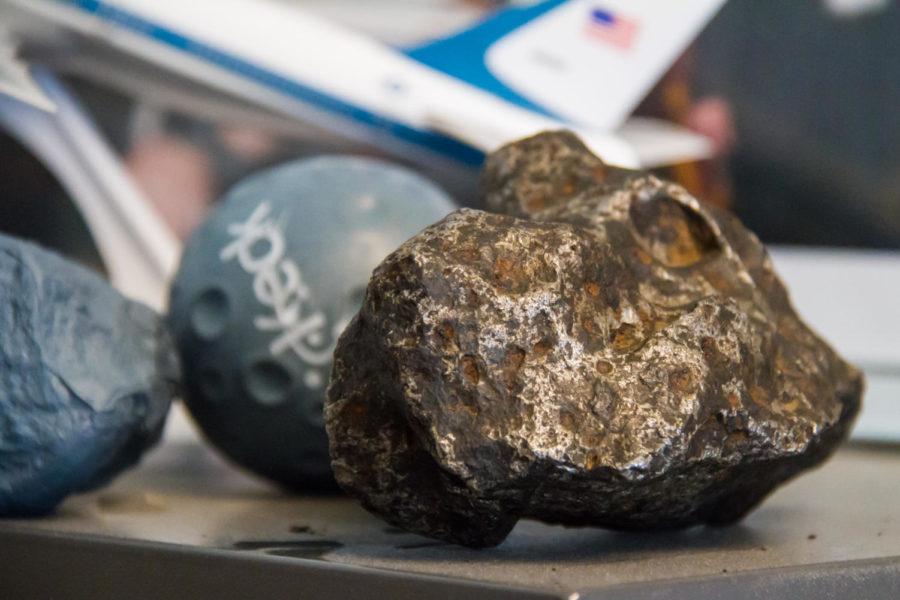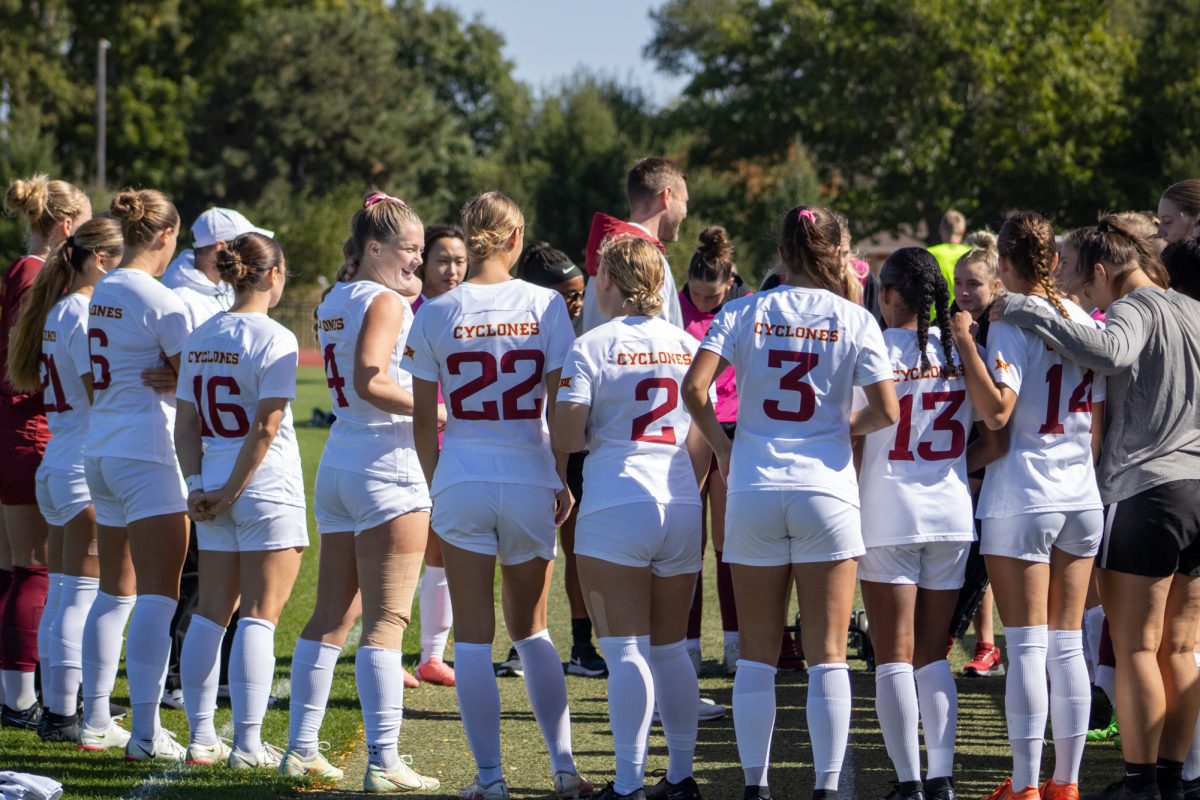ISU researchers becoming asteroid deflectors
An asteroid sits on one of the shelves of Bong Wie’s, director of the Asteroid Deflection Research Center, office. Though this is a small meteorite, the ones the center is looking to deflect are upwards of 150 meters in diameter.
September 1, 2015
The ISU researchers who studied the use of nuclear devices on asteroids have found a new way to disrupt asteroids on a collision course with earth.
Bong Wie, professor of aerospace engineering, started the Asteroid Deflection Research Center in 2008 after receiving motivation from a technical conference on planetary defense technology. Wie is now one of the world’s leading researchers on asteroid deflection and was featured in a National Geographic article earlier this month.
Wie is serving his eighth year as the director of the Asteroid Deflection Research Center, which continues to be one of the best academic research centers on asteroid deflection. He said if an asteroid about 50 meters in diameter hit the earth, it could create a three-kilometer impact crater big enough to wipe out a city. He also said if one was the right material and size, an asteroid could have an impact “equivalent to 100 Hiroshima nuclear bombs.”
During the first few years of his research, Wie focused on using a nuclear device to destroy the asteroid before it reached earth. In the process of his research, Wie started to make some major advancements with Ben Zimmerman, graduate student in aerospace engineering.
“We are the first group that is actually trying, in an academic setting, to simulate asteroid disruption,” Zimmerman said.
Zimmerman expects to finish his doctorate in aerospace engineering this spring.
During the past few months Wie started to think about ways to deflect asteroids without using a nuclear device, which he said can be difficult politically. He approached Zimmerman, who has worked under Wie for more than two years, earlier this year with an odd question.
“What do you think hurts more — me punching you with one fist or a lot of little tiny fists?” Zimmerman recalled.
Wie had Zimmerman and fellow graduate student Joshua Lyzhoft, who also expects to finish his doctorate in aerospace engineering this spring, start working on simulations using the concept of a multiple-kill vehicle. They worked with multiple vehicles that used high amounts of kinetic energy and hit the asteroid from various angles, so a regular satellite could then pulverize the asteroid.
Lyzhoft, who has worked under Wie for more than three years, compared it to a shotgun. He said if you shot a rifle at a piece of paper it would put a hole in it, but if you shot it with a shotgun, it would destroy it.
While they are making progress, Wie was still very adamant that using the nuclear option is the most cost-effective way of disrupting an asteroid. A nuclear avenue would cost about three times less than the multi-kill vehicle strategy, which requires a much heavier and more powerful rocket.
Testing the theories in space won’t happen anytime soon because of the political issues of having weapons in space, Zimmerman said, but if they had the funding they could probably begin testing for the multi-kill vehicle strategy right now.







